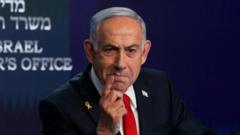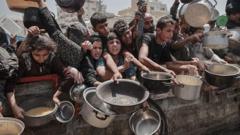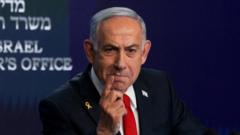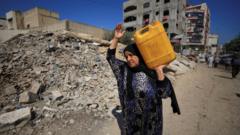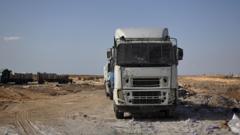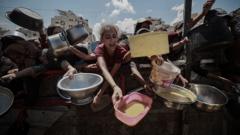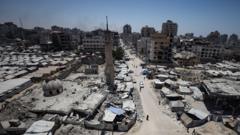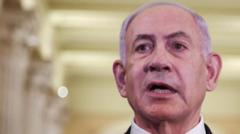Despite intensified military pressure and deteriorating conditions, Hamas maintains a secret cash payment method for 30,000 civil servants, disbursing reduced salaries every ten weeks. This system remains fraught with danger as workers brave the risk of Israeli strikes to collect their wages, leading to growing discontent among civilians.
The Hidden Payment System Keeping Hamas Afloat Amid Crisis
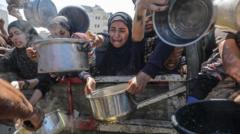
The Hidden Payment System Keeping Hamas Afloat Amid Crisis
Amid severe restrictions and economic turmoil in Gaza, Hamas continues to fund civil servants' salaries through a covert cash distribution network, causing unrest among the population.
Hamas has faced significant setbacks two years into its war, with weakened military strength and political pressure mounting, yet it has simultaneously sustained a covert cash-based payment system to maintain financial support for around 30,000 civil servants. Reports indicate that this system has facilitated the payment of approximately $7 million (£5.3 million) in fragmented salaries, with employees receiving a fraction of their pre-war wages—about 20% of full amounts every ten weeks. Consequently, many civil servants are reporting severe discontent due to rising inflation and a food crisis in Gaza.
The BBC's investigation revealed that employees, including police officers and tax officials, receive encrypted instructions on their phones to receive salaries at disguised locations under the guise of casual meetings. This process can be perilous; one civil servant noted, "I say goodbye to my family every time I go to collect wages, fully aware I might face an Israeli strike."
The challenges extend beyond mere financial constraints. A schoolteacher, anonymized for safety, shared his experience of receiving old and unusable banknotes, highlighting the desperation faced by families as they struggle to find basic sustenance. Reports of massive inflation make it difficult for residents to afford essentials, leading many to rely on aid distribution sites.
Despite these hardships, it is unclear how Hamas continues to finance this system amidst the destruction of vital infrastructure. Insider accounts suggest that the group had amassed around $700 million in cash and assets pre-war, overseen by key leadership figures recently targeted in military operations.
To generate revenue during the conflict, Hamas has innovated its tax schemes and significantly marked up the prices of goods like cigarettes, which spiked from $5 to over $170. Alongside cash distributions, the group has been criticized for prioritizing its members in food aid distribution instead of helping the broader community, stoking public resentment.
Residents express deep frustration, observing that aid is often funneled to Hamas supporters while they endure chronic shortages. A widow shared her despair at watching neighbors receive assistance while her children suffer from hunger, emphasizing the divide caused by the ongoing conflict.
Hamas has historically relied on a mix of taxes from the Gazan populace and external support from entities such as Qatar and Iran to sustain its operations—alliances that have continued even as they leverage local resources to maximize their financial reach during the war.




